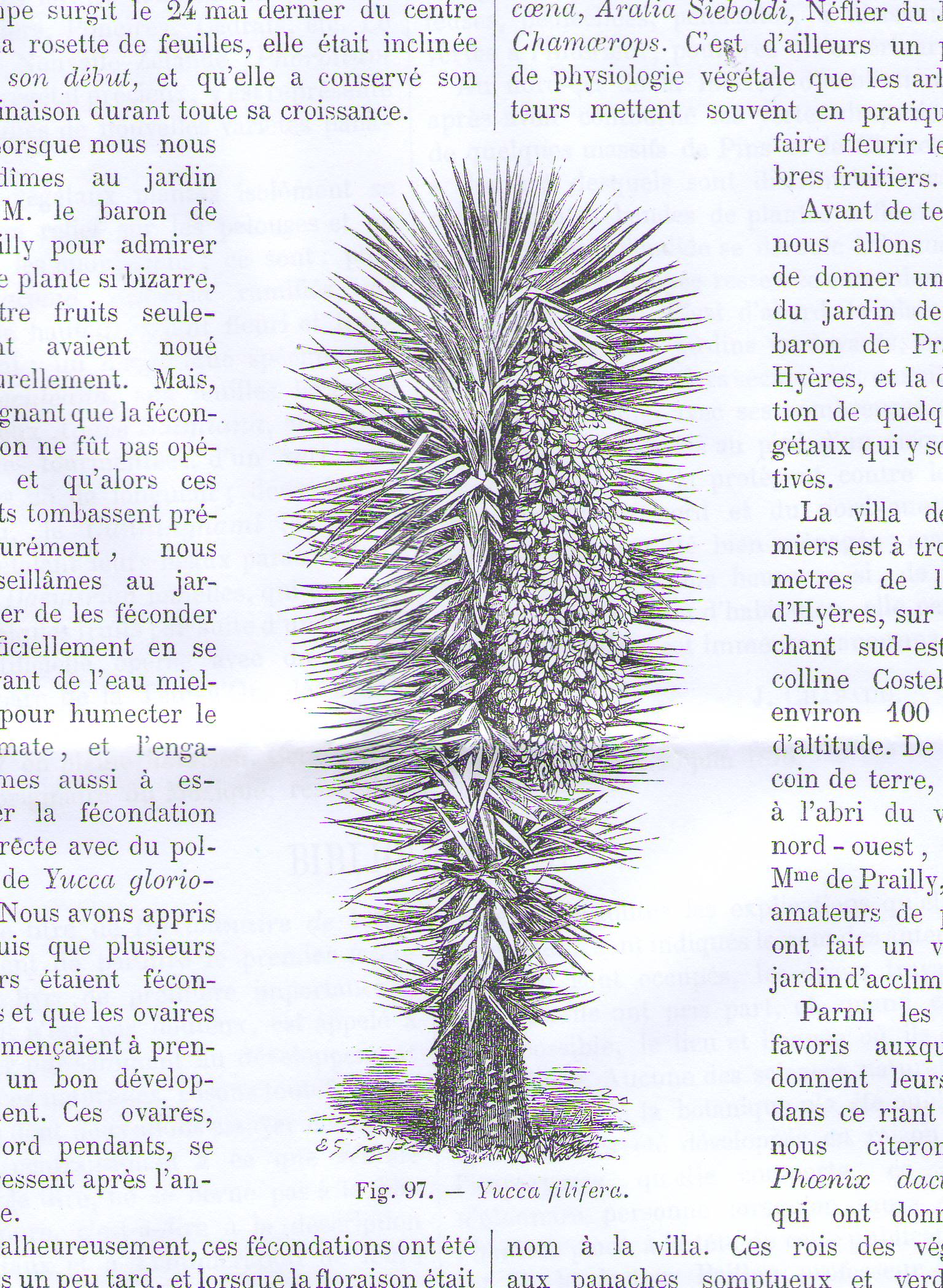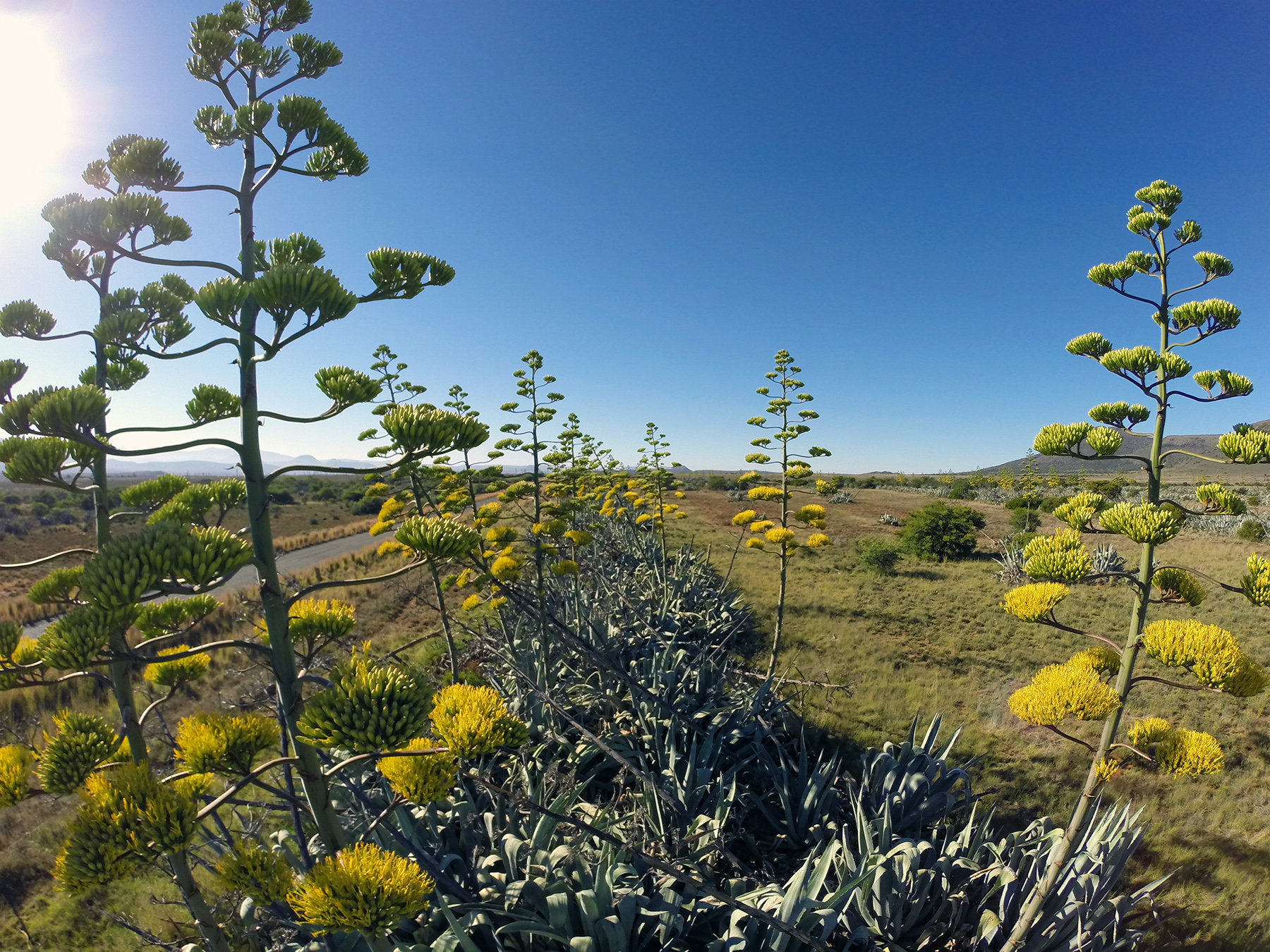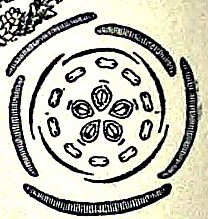|
Huntington Desert Garden
The Huntington Desert Garden is part of The Huntington Library, Art Collections and Botanical Gardens in San Marino, California. The Desert Garden is one of the world's largest and oldest collections of cacti, succulents and other desert plants, collected from throughout the world. It contains plants from extreme environments, many of which were acquired by Henry E. Huntington and William Hertrich (the first garden curator) in trips taken to several countries in North, Central and South America. One of the Huntington's most botanically important gardens, the Desert Garden brought together a group of plants largely unknown and unappreciated in the beginning of the 1900s. Containing a broad category of xerophytes (aridity-adapted plants), the Desert Garden grew to preeminence and remains today among the world's finest, with more than 5,000 species in the 10 acre (4 ha) garden. Desert Garden collections :''Also see:'' Desert Garden Conservatory The most significant collections a ... [...More Info...] [...Related Items...] OR: [Wikipedia] [Google] [Baidu] |
Golden Barrel Cactus
''Kroenleinia grusonii'', popularly known as the golden barrel cactus, golden ball, "mother-in-law's cushion" or "mother-in-law’s chair" is a species of barrel cactus which is endemic to east-central Mexico. The golden barrel cactus is rare and endangered—potentially regionally extinct—in nature. It is native to the Mexican states of Querétaro and Hidalgo, particularly near Mesa de León. Wild populations of ''K. grusonii'' were adversely affected in the 1990s as a result of wild specimens being poached as well as the creation of the Zimapán Dam and reservoir (in Hidalgo). The golden barrel cactus is a fairly adaptable species, but naturally prefers growing in rich, volcanic (but well-aerated) soil on sunny slopes, where water quickly flees from its roots. The species may be found growing at altitudes as high as above sea level. Taxonomy ''Kroenleinia grusonii'' was originally placed in the small genus '' Echinocactus'', which, together with the related genus '' Feroca ... [...More Info...] [...Related Items...] OR: [Wikipedia] [Google] [Baidu] |
Agave
''Agave'' (; ; ) is a genus of monocots native to the hot and arid regions of the Americas and the Caribbean, although some ''Agave'' species are also native to tropical areas of North America, such as Mexico. The genus is primarily known for its succulent and xerophytic species that typically form large rosettes of strong, fleshy leaves. ''Agave'' now includes species formerly placed in a number of other genera, such as ''Manfreda'', ×''Mangave'', ''Polianthes'' and ''Prochnyanthes''. Many plants in this genus may be considered perennial, because they require several to many years to mature and flower. However, most ''Agave'' species are more accurately described as monocarpic rosettes or multiannuals, since each individual rosette flowers only once and then dies; a small number of ''Agave'' species are polycarpic. Maguey flowers are considered edible in many indigenous culinary traditions of Mesoamerica. Along with plants from the closely related genera '' Yucca' ... [...More Info...] [...Related Items...] OR: [Wikipedia] [Google] [Baidu] |
Beaucarnea
''Beaucarnea'' is a genus of flowering plants native to Mexico and Central America. In the APG III classification system, it is placed in the family Asparagaceae, subfamily Nolinoideae (formerly the family Ruscaceae). ''Beaucarnea'' is sometimes treated as a synonym of the genus '' Nolina'', with the species being then transferred to that genus. However, recent research shows that ''Beaucarnea'' should be treated as an independent genus. The species are small tropical xerophytic trees growing to 6–10 m tall, with a trunk 20–40 cm diameter with a flared base; young plants are single-stemmed, branching only after flowering. The leaves are evergreen, linear, strap-shaped, 0.5-1.8 m long and 1.5–2 cm broad, leathery in texture, with a finely serrated margin. The flowers are produced only on old trees, forming on large panicles 75–110 cm long, the individual flowers numerous but very small (1.5 mm diameter), greenish-white, with six tepals. Spe ... [...More Info...] [...Related Items...] OR: [Wikipedia] [Google] [Baidu] |
Yucca Filifera
''Yucca filifera'' is a member of the subfamily Agavaceae, family Asparagaceae, native to central Mexico. History It was discovered in 1840 in northeastern Mexico between Saltillo and Parras () on 19 May 1847 by merchant and explorer Josiah Gregg.Yucca filifera Chabaud Tropicos, Missouri Botanical Garden, 2013 It was later introduced to Europe and described for science by J. Benjamin Chabaud (1833-1915) in 1876. Description  A tall, heavily branched yucca, ''Y. filifera'' has straight, ensiform leaves growing in
A tall, heavily branched yucca, ''Y. filifera'' has straight, ensiform leaves growing in [...More Info...] [...Related Items...] OR: [Wikipedia] [Google] [Baidu] |
Yucca
''Yucca'' is a genus of perennial shrubs and trees in the family Asparagaceae, subfamily Agavoideae. Its 40–50 species are notable for their rosettes of evergreen, tough, sword-shaped leaves and large terminal panicles of white or whitish flowers. They are native to the hot and dry (arid) parts of the Americas and the Caribbean. Early reports of the species were confused with the cassava (''Manihot esculenta''). Consequently, Linnaeus mistakenly derived the generic name from the Taíno word for the latter, ''yuca''. The Aztecs living in Mexico since before the Spanish arrival, in Nahuatl, call the local yucca species ('' Yucca gigantea'') , which gave the Spanish . is also used for '' Yucca filifera''. Distribution The natural distribution range of the genus ''Yucca'' (49 species and 24 subspecies) covers a vast area of the Americas. The genus is represented throughout Mexico and extends into Guatemala ('' Yucca guatemalensis''). It also extends to the north throug ... [...More Info...] [...Related Items...] OR: [Wikipedia] [Google] [Baidu] |
Caudiciform
A caudex (plural: caudices) of a plant is a Plant stem, stem, but the term is also used to mean a rootstock and particularly a basal stem structure from which new growth arises.pages 456 and 695 In the strict sense of the term, meaning a stem, "caudex" is most often used with plants that have a different stem Morphology (biology), morphology from the typical flowering plant, angiosperm dicotyledon stem: examples of this include Arecaceae, palms, ferns, and cycads. The related term caudiciform, literally meaning stem-like, is sometimes used to mean pachycaul, thick-stemmed. Etymology The term is from the Latin language, Latin ''caudex'', a noun meaning "tree trunk". See also * Stipe (botany), Stipe References External links Bihrmann's Caudiciforms''Extensive listing of caudiciforms, images for most species'' {{Webarchive, url=https://web.archive.org/web/20090319142333/http://waynesword.palomar.edu/ecoph30.htm#caudiciform , date=2009-03-19 ''Caudiciform Plants With ... [...More Info...] [...Related Items...] OR: [Wikipedia] [Google] [Baidu] |
Fouquieria
''Fouquieria'' is a genus of 11 species of desert plants, the sole genus in the family Fouquieriaceae. The genus includes the ocotillo ('' F. splendens'') and the Boojum tree or cirio ('' F. columnaris''). They have semi succulent stems with thinner spikes projecting from them, with leaves on the bases spikes. They are unrelated to cacti and do not look much like them; their stems are proportionately thinner than cactus stems and their leaves are larger. Taxonomy Taxonomic history ''Fouquieria'' species do not have a particularly close resemblance to any other sort of plants; genetic evidence has shown they belong in the Ericales. Before this, they had been variously placed in the Violales or their own order, Fouquieriales. The Seri people identify three species of ''Fouquieria'' in their area of Mexico: ''jomjéeziz'' or ''xomjéeziz'' ('' F. splendens''), ''jomjéeziz caacöl'' ('' F. diguetii'', Baja California tree ocotillo), and ''cototaj'' ('' F. columnaris'', boo ... [...More Info...] [...Related Items...] OR: [Wikipedia] [Google] [Baidu] |
Euphorbia
''Euphorbia'' is a very large and diverse genus of flowering plants, commonly called spurge, in the family Euphorbiaceae. "Euphorbia" is sometimes used in ordinary English to collectively refer to all members of Euphorbiaceae (in deference to the type genus), not just to members of the genus. Euphorbias range from tiny annual plants to large and long-lived trees. The genus has roughly 2,000 members, making it one of the largest genera of flowering plants. It also has one of the largest ranges of chromosome counts, along with ''Rumex'' and ''Senecio''. '' Euphorbia antiquorum'' is the type species for the genus ''Euphorbia''. It was first described by Carl Linnaeus in 1753 in ''Species Plantarum''. Some euphorbias are widely available commercially, such as poinsettias at Christmas. Some are commonly cultivated as ornamentals, or collected and highly valued for the aesthetic appearance of their unique floral structures, such as the crown of thorns plant ('' Euphorbia milii'' ... [...More Info...] [...Related Items...] OR: [Wikipedia] [Google] [Baidu] |
Crassulaceae
The Crassulaceae (from Latin ''crassus'', thick), also known as the stonecrop family or the orpine family, are a diverse family of dicotyledon flowering plants characterized by succulent leaves and a unique form of photosynthesis, known as Crassulacean acid metabolism (CAM). Flowers generally have five floral parts. Crassulaceae are usually herbaceous but there are some subshrubs, and relatively few treelike or aquatic plants. Crassulaceae are a medium size monophyletic family in the core eudicots, among the order Saxifragales, whose diversity has made infrafamilial classification very difficult. The family includes approximately 1,400 species and 34–35 genera, depending on the circumscription of the genus '' Sedum'', and distributed over three subfamilies. Members of the Crassulaceae are found worldwide, but mostly in the Northern Hemisphere and southern Africa, typically in dry and/or cold areas where water may be scarce, although a few are aquatic. Crassulaceae are m ... [...More Info...] [...Related Items...] OR: [Wikipedia] [Google] [Baidu] |
Succulent
In botany, succulent plants, also known as succulents, are plants with parts that are thickened, fleshy, and engorged, usually to retain water in arid climates or soil conditions. The word ''succulent'' comes from the Latin word ''sucus'', meaning "juice" or "sap". Succulent plants may store water in various structures, such as leaves and stems. The water content of some succulent organs can get up to 90–95%, such as ''Glottiphyllum semicyllindricum'' and ''Mesembryanthemum barkleyii''. Some definitions also include roots, thus geophytes that survive unfavorable periods by dying back to underground storage organs may be regarded as succulents. The habitats of these water-preserving plants are often in areas with high temperatures and low rainfall, such as deserts, but succulents may be found even in alpine ecosystems growing in rocky soil. Succulents are characterized by their ability to thrive on limited water sources, such as mist and dew, which makes them equipped t ... [...More Info...] [...Related Items...] OR: [Wikipedia] [Google] [Baidu] |
Sedum
''Sedum'' is a large genus of flowering plants in the family Crassulaceae, members of which are commonly known as stonecrops. The genus has been described as containing up to 600 species, subsequently reduced to 400–500. They are leaf succulents found primarily in the Northern Hemisphere, but extending into the southern hemisphere in Africa and South America. The plants vary from annual and creeping herbs to shrubs. The plants have water-storing leaves. The flowers usually have five petals, seldom four or six. There are typically twice as many stamens as petals. Various species formerly classified as ''Sedum'' are now in the segregate genera ''Hylotelephium'' and '' Rhodiola''. Well-known European species of ''Sedum'' are '' Sedum acre'', '' Sedum album'', ''Sedum dasyphyllum'', ''Sedum reflexum'' (also known as ''Sedum rupestre'') and '' Sedum hispanicum''. Description ''Sedum'' is a genus that includes annual, biennial, and perennial herbs. They are characterised b ... [...More Info...] [...Related Items...] OR: [Wikipedia] [Google] [Baidu] |
Crassula
''Crassula'' is a genus of succulent plants containing about 200 accepted species, including the popular jade plant (''Crassula ovata''). They are members of the stonecrop family (Crassulaceae) and are native to many parts of the globe, but cultivated varieties originate almost exclusively from species from the Eastern Cape of South Africa. Crassulas are usually propagated by stem or leaf cuttings. Most cultivated forms will tolerate some small degree of frost, but extremes of cold or heat will cause them to lose foliage and die. Taxonomy ''Crassula'' was first formally described by Carl Linnaeus in 1753 with 10 species. Etymology The name crassula comes from the Latin adjective ''crassus'', meaning thick, referring to the thickening of the succulent leaves. List of selected species *''Crassula alata'' *'' Crassula alba'' *'' Crassula alpestris'' (Sand-Coated Crassula) *''Crassula alstonii'' *''Crassula aquatica'' (common pigmyweed, water pygmyweed) *'' Crassula arbore ... [...More Info...] [...Related Items...] OR: [Wikipedia] [Google] [Baidu] |




